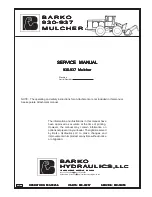
Make electrical connections by stripping about 3/8 inch (10 mm) of insulation
from the end of the wire (use strip gauge molded in base). Then slide the wire
under the clamping plate and tighten the clamping plate screw. Do not loop
the wire under the clamping plate. (See Figure 4)
Check the zone wiring of all bases in the system before installing the detec-
tors. This includes checking the wiring for continuity, correct polarity, ground
fault testing and performing a dielectric test.
The base includes an area for recording the zone, address, and type of detec-
tor being installed. This information is useful for setting the detector head
address and for verification of the detector type required for that location.
Once all detector bases have been wired and mounted, and the loop wiring
has been checked, the detector heads may be installed in the bases.
TESTING AND MAINTENANCE
Detectors and bases must be tested after installation and as an integral part of
a periodic maintenance program. Test as follows:
NOTE: Before testing, notify the proper authorities that the smoke sensor
system is undergoing maintenance and, therefore, will be temporarily out of
service. Disable the system undergoing maintenance to prevent unwanted
alarms.
1. If configured as in Figure 3, reverse the polarity of the external 24VDC sup-
ply. All EBS bases on the loop should sound.
2. Latch the detector LED on from the control panel. That individual detector’s
EBS should sound.
When performing maintenance on connected smoke detectors, carefully note
the location and address of each removed detector.
FIGURE 2: MOUNTING
C0891-06
Horn Grouping
No extra connections are required for grouping. However, the panel must be
configured to set up a group to sound their horns together. The panel can be
set up for a device to activate only the remote annunciator of the device that
sensed the alarm or to activate the remote annunciators of all the devices on
the loop. The latter will provide horn grouping for a loop.
Detectors and bases must be tested after installation and as an integral part of
periodic maintenance. Test the EBS as follows:
1. Single Horn Test: Configure the panel to only activate the remote annun-
ciator of the alarm (test) detector. Activate the detector’s base will sound
in less than 1 second.
2. Multiple Horn Test: Configure the panel to activate all remote annuncia-
tors on the loop when the panel detects an alarm or test. Initiate a test
and all horns on the loop will sound simultaneously.
NOTE
: Grouping horns together can only be used as a supplementary evacu-
ation system. It is not acceptable to group horns for primary alarm signaling.
2
I56-3742-001R
06-10
firealarmresources.com






















